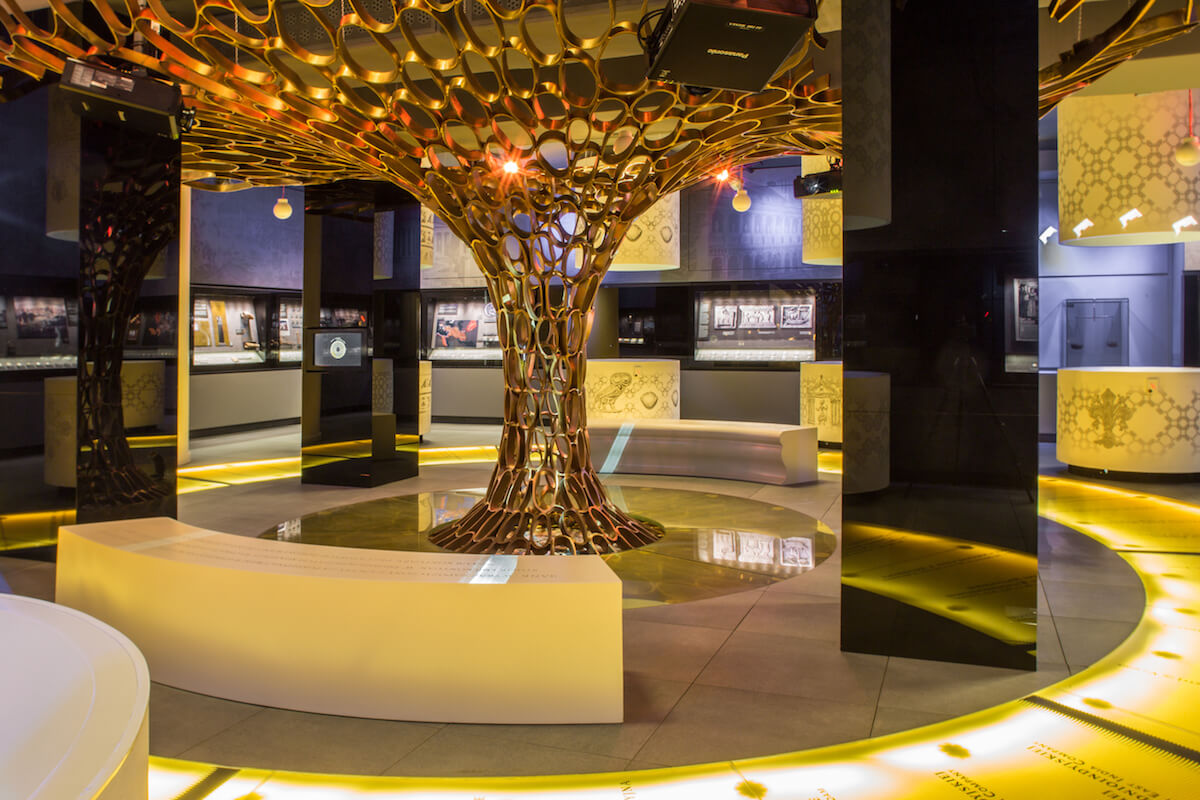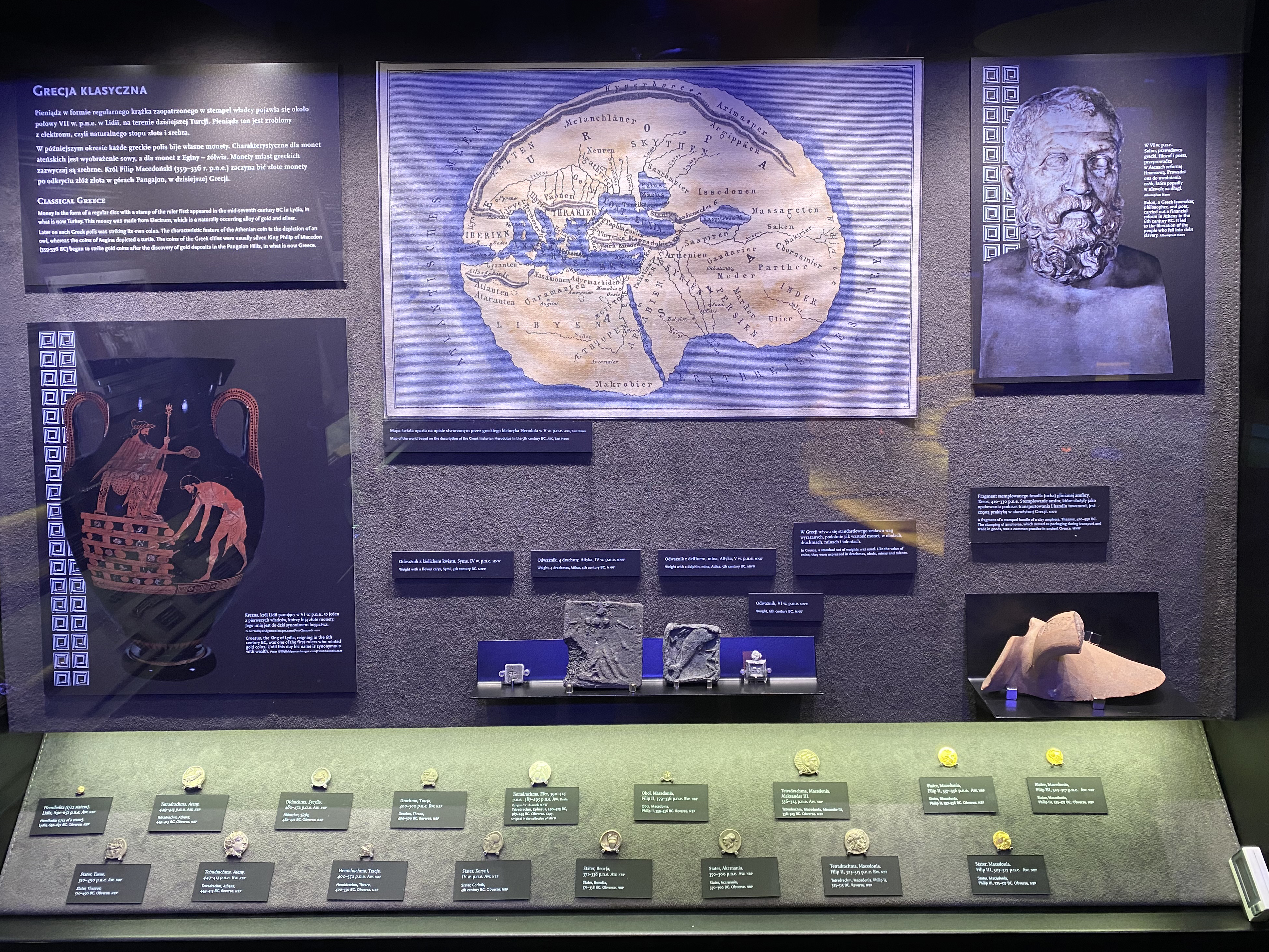Antiquity–Middle Ages–Modernity
Brak tytułu
Brak krótkiego opisu
In the Antiquity–Middle Ages–Modernity room we have presented coins which are a valuable source of information about the economic condition, trade contacts and also fiscal policy of a given area. They will lead us, chronologically, to the world of the Greek polis, the Roman Republic and Roman Empire, to the economic centres of mediaeval and modern Europe. However, we will begin our journey with commodity money, which was used in trade exchange before coins became common. At the exhibition, you can look at the Katanga Crosses, kauri shells and hack-silver found in medieval treasures on the territory of Poland. The rulers of Lydia, in Asia Minor, were the first to strike coins in the 7th century BC. The guarantee of the value of standardized issues was the symbol of the ruler – a lion’s head, which can still be distinguished on the Lydian hemihekte. Since that time, the history of money has been inextricably linked with political history, and thanks to the markings, symbols and portraits placed on numismatic items, it is possible to identify their issuer. At the exhibition there are 8 so-called wells of knowledge, which contain additional information about management methods, social relations, discoveries and trade routes. By delving into them, we can better understand the economic changes that took place over 25 centuries in Europe.


